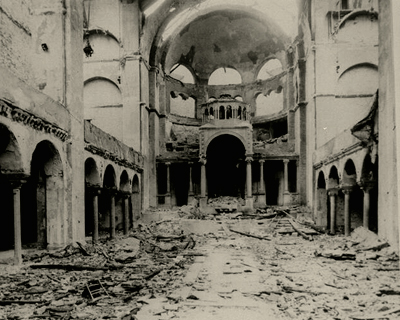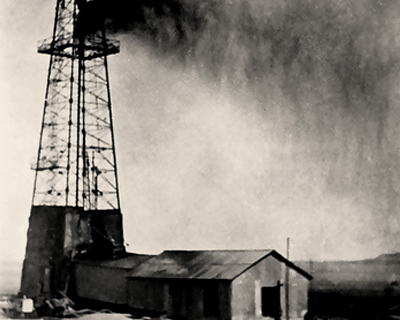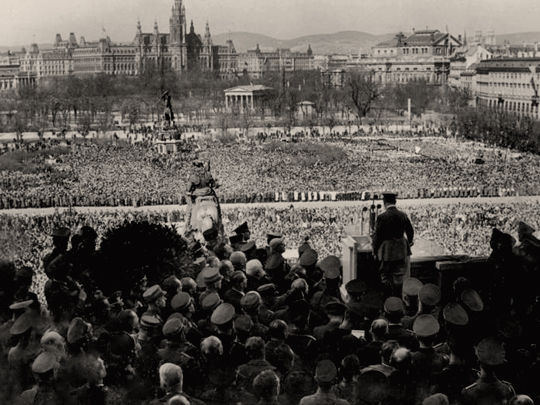German Federal Archive / Wikimedia Commons / CC-BY-SA-3.0 / GFDL
1 – The Anschluss – Nazi Invasion and Forced Incorporation of Austria
The Anschluss was the Nazi propaganda term for the annexation of Austria into Nazi Germany on 12 March 1938.
The 1938 Anschluss stands in contrast to the Anschluss movement, with Austria and Germany united as one country to form a “Greater Germany”.
This was initially attempted in 1918 when the Republic of German-Austria attempted a union with Germany.
However, the Treaty of Saint Germain and the Treaty of Versailles forbade both the union and use of the name “German-Austria” (Deutschösterreich).
Previously, the Austro-Prussian War of 1866 had resulted in the dissolution of the 19th-century German Confederation, a loose association which had included Austria and various independent German monarchies, such as Prussia and Bavaria.
2 – Kristallnacht Riots – Nazis Destroy Jewish Shops, Homes & Synagogues

Kristallnacht, also known as the Night of Broken Glass (Reichspogromnacht), was a pogrom against Jews throughout Nazi Germany on the 9–10 November 1938.
It was carried out by SA paramilitary forces and German civilians.
The name Kristallnacht comes from the shards of broken glass that littered the streets after Jewish-owned stores, buildings, and synagogues had their windows smashed.
Estimates of the number of fatalities caused by the pogrom have varied. Early reporting estimated 91 Jews were murdered during the attacks.
However, modern analysis of German scholarly sources puts the number much higher.
When deaths from post-arrest maltreatment and subsequent suicides are included, the death toll climbs into the hundreds.
Additionally, 30,000 Jews were arrested and incarcerated in Nazi concentration camps.
Over 1,000 synagogues were burned (95 in Vienna alone) and over 7,000 Jewish businesses destroyed or damaged.
The pretext for the attacks was the assassination of the German diplomat Ernst vom Rath by Herschel Grynszpan, a German-born Polish Jew living in Paris.
Kristallnacht was followed by economic and political persecution of Jews and is viewed as the beginning of the Final Solution and The Holocaust.
3 – Saudi Arabian Oil was First Discovered in Commercial Quantities

Saudi Arabian oil was first discovered in commercial quantities at Dammam oil well No. 7 in 1938, in modern-day Dhahran, Eastern Province, Saudi Arabia.
Large oil reserves were first identified in the Dhahran area in 1931.
In 1935, Standard Oil drilled the first commercially viable oil well, and later established a subsidiary in Saudi Arabia called the Arabian American Oil Company (ARAMCO), now fully owned by the Saudi government and known as Saudi Aramco.
Dhahran has been the home of Saudi Aramco’s headquarters for 80 years.
